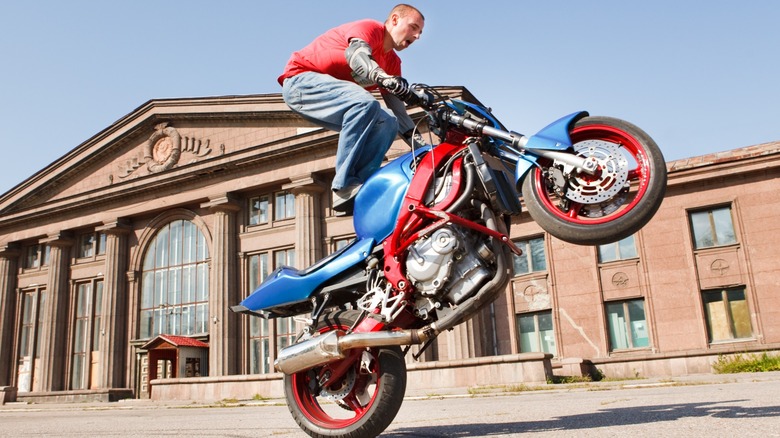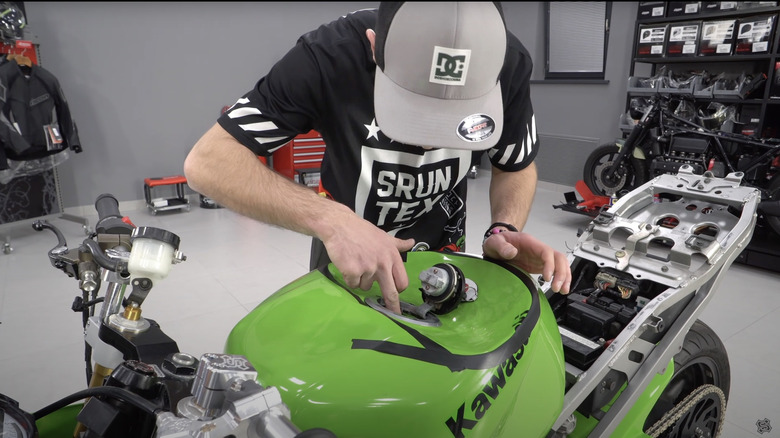The Reason Why Stunt Bikes Have Dented Gas Tanks
If you go to a professional stunt event or even scroll through competition clips online, you'll notice that the bikes often have a dented gas tank. Now, it's easy to think that's a flaw from a crash. However, in the world of motorcycle stunts, dents aren't a mistake. In fact, plenty of the quirky things bikers do, like riders leaning sideways while turning or revving at stop lights, actually have perfectly logical explanations. In this particular instance, pulling off tricks like high-chair wheelies, tank stoppies, or acrobatic seat swaps requires the body to move far beyond the normal riding position.
To make that possible, riders modify their bikes so that what looks impossible does, in fact, become possible. Interestingly, the practice started with riders experimenting in the 1980s and 1990s as freestyle stunt riding took off. Sport bikes at the time had smooth, rounded tanks that weren't always practical when riders tried to climb onto them or lock their knees during a trick. By hammering in the tank area, riders created a shallow pocket where they could sit, stand, or anchor their legs. Over time, that rough modification evolved into a defining feature of stunt bikes.
As a result, aftermarket builders now sell custom stunt tanks built to withstand the constant pressure of boots and knees. That's because, for stunt riders, the machine itself becomes as much a performance tool as it is a vehicle. So, the next time you see a sport bike with a caved-in tank, there's a good chance it has performed some sick stunts.
But denting the tank isn't without consequences
As common as it is, denting a gas tank comes with trade-offs. The biggest is practicality: when you push the metal inward, you reduce the tank's fuel capacity. That means fewer miles between refueling stops, which doesn't matter much in a parking-lot stunt session but can be a nuisance on the street. There's also the question of safety. A poorly executed dent can weaken the tank, create stress points, or even cause the gas cap to stop screwing on properly.
Some riders have learned the hard way that a tank dented with the wrong tools or too much force can split, leaving behind a costly repair. The gas could eat through the tank's protective coating if it's already cracked, eventually leading to rusting and flaking. So, you see, the risks aren't just mechanical. To anyone outside the stunt world, a dented tank signals aggressive riding, which can tank the bike's resale value. A spotless sport bike suggests the owner has been careful, while one with a caved-in tank, chipped paint, and rusting metal suggests the bike has had a much rougher life. That can make it difficult to sell or trade, even if the rest of the bike is still sound.
Despite the drawbacks, many riders still consider the dent a badge of honor. Just as the X mark bikers put over headlights started for safety and became tradition, dented tanks started for function and have now become an integral part of stunt riding. While additional safeguards now exist, like crash cages, stunt seats, or custom tanks welded with knee pockets, denting remains the old-school method. It's quick, affordable, and tied to the roots of the sport.

